In October, DYNSEO organized a national survey on animation and special education in the disability sector. The objective was to provide an overview of existing practices and to share good practices with the community.
We received more than 60 answers to our questionnaire, and we would like to thank all the special educators, occupational therapists, animators, psychologists and directors who took the time to answer our survey.

Our survey targets all motor and psychic handicaps in children and adults:
- – Polyhandicap,
- – Motor disability with or without associated disorders,
- – Mental disability, psychic disorders and behavioral disorders,
- – TED with or without DI,
- – Autism – ASD,
- – Mild or moderate intellectual disabilities with or without associated disorders,
- – Cerebrolysed people,
- – Autoimmune diseases,
- – Public TH in professional reclassification (18-77 years old, average age 45 years old)
What are the favorite activities for the people you assist?
Facilitators/special educators could select up to 3 activities.
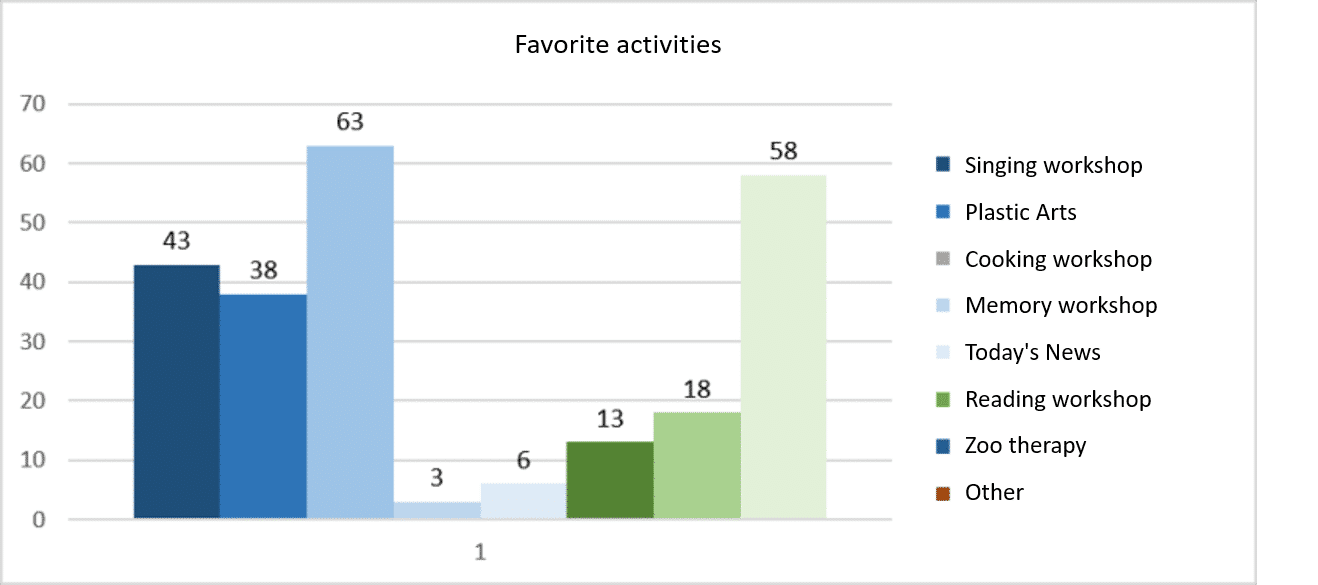
Other preferred activities identified are:
- Writing workshops,
- Reading the newspaper,
- Musical awakening,
- Cultural outings,
- The aquatic space, water sports: swimming pool, balneo,
- Physical activities: circus arts, horseback riding/harnessing, walking, tandem skiing and joëlette,
- Sophrology, the Snoezelen room,
- Walks, Wood garden workshops,
- Playful and educational activities: kapplas,
- Animal workshops, animal mediation,
- Learning towards autonomy such as taking the bus or running errands.
As a specialized educator, what are the best animations you have implemented?
Here is a sample of the best animations realized in the institutions specialized in the sector of the handicap, which come to supplement the list above, do not hesitate to write to us to obtain the complete list. The creative, artistic and sports animations are very numerous and very pleasant. They are always quoted in the best animations.
- Projects around music: singing, choir, guitar, djembe,
- Artistic expression: clay, ink, greasy chalk, collage, photo workshops, light-painting with an exhibition at the end of the creation,
- Forum theater, circus, slam,
- The creation of lyric groups, communication workshops using photos, games, reading of stories, tales with or without musical background,
- Scrapbooking and newspaper creation workshops,
- The creation of individual times: setting up a library space,
- Sensory activities, self-esteem and horse therapy,
- Workshops around the kitchen: snacks, themed meals with a decoration of the living space corresponding to the theme such as the West Indies or Asia, the creation of a tea room to professionalize the people welcomed.
- Activities around events: the making of a miniature Christmas village, the preparation of a float followed by a walk with the residents in the city, manual activities for the World Cup etc.
- Participation in events such as the Christmas market, the communal carnivals or the Telethon of the commune.
- The organization of competitions and dance shows: folk, contemporary, or body expression.
- Partnerships with schools, with winegrowers to do the harvest, with a cartoonist to create a comic strip or a linen sorting organization,
- Outings to the sea or the zoo,
- The water excursions, sports stays, rugby, running, cross country adapted to the possibilities of all.
Are you assisted by other people during your animations?
The facilitators / educators specialized in the disability sector are:
- 28% always accompanied by a professional, (often 32%)
- to 35%, often by psychomotricians,
- to 34% often by psychologists.
However, in 59% of cases they are never assisted by health care workers, 60% by occupational therapists and 70% by speech therapists.
Thus, we can think that in the majority of the cases the animators organize the animations alone in the institutions specialized in the sector of the handicap, with the occasional participation of a psychomotrician, a psychologist and other professionals of the establishment.
Do families participate in the activities?
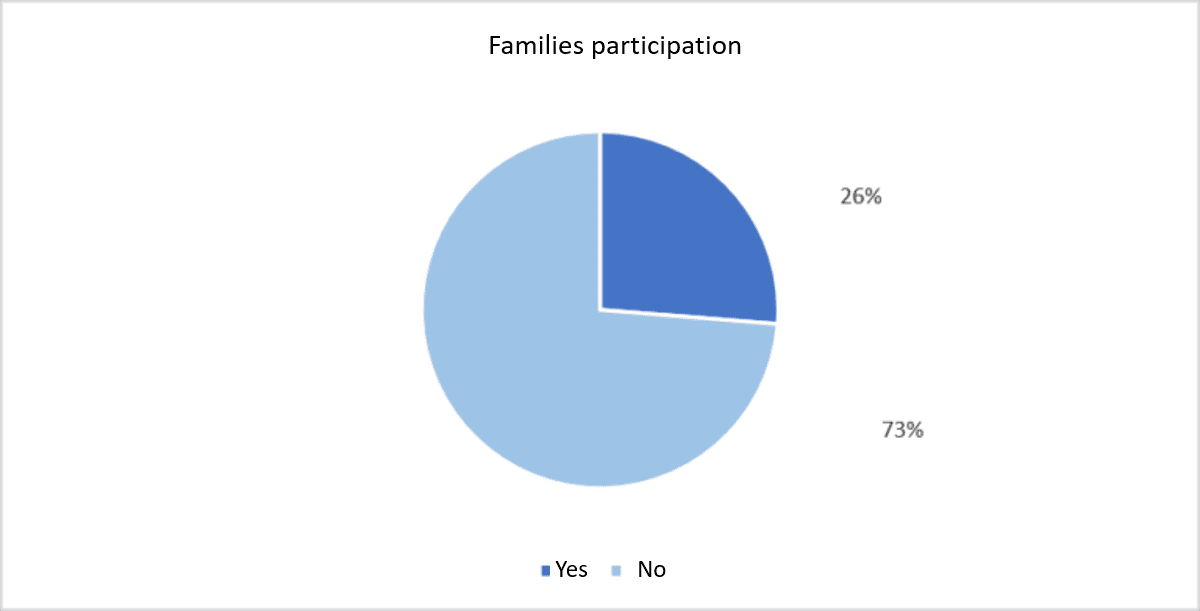
At 26%, families participate in activities in institutions specializing in the disability sector.
Families assist their loved one on invitations to outings, especially to encourage them in a new activity. They come to an activity such as the swimming pool from time to time and thus discover the progress of their loved one while having a pleasant time.
They are present for them during the theater performances or to see any work done.
Some professionals and parents get involved in setting up an association to organize activities such as the lottery or the Christmas market. Families propose visits and do not hesitate to call on their network.
The question of family participation is under consideration in some associations.
Some families live too far away from their children’s school or work too hard or have other dependent children making them unavailable for this type of support. Families may occasionally miss an activity because they need respite.
How do you rate a good animation?
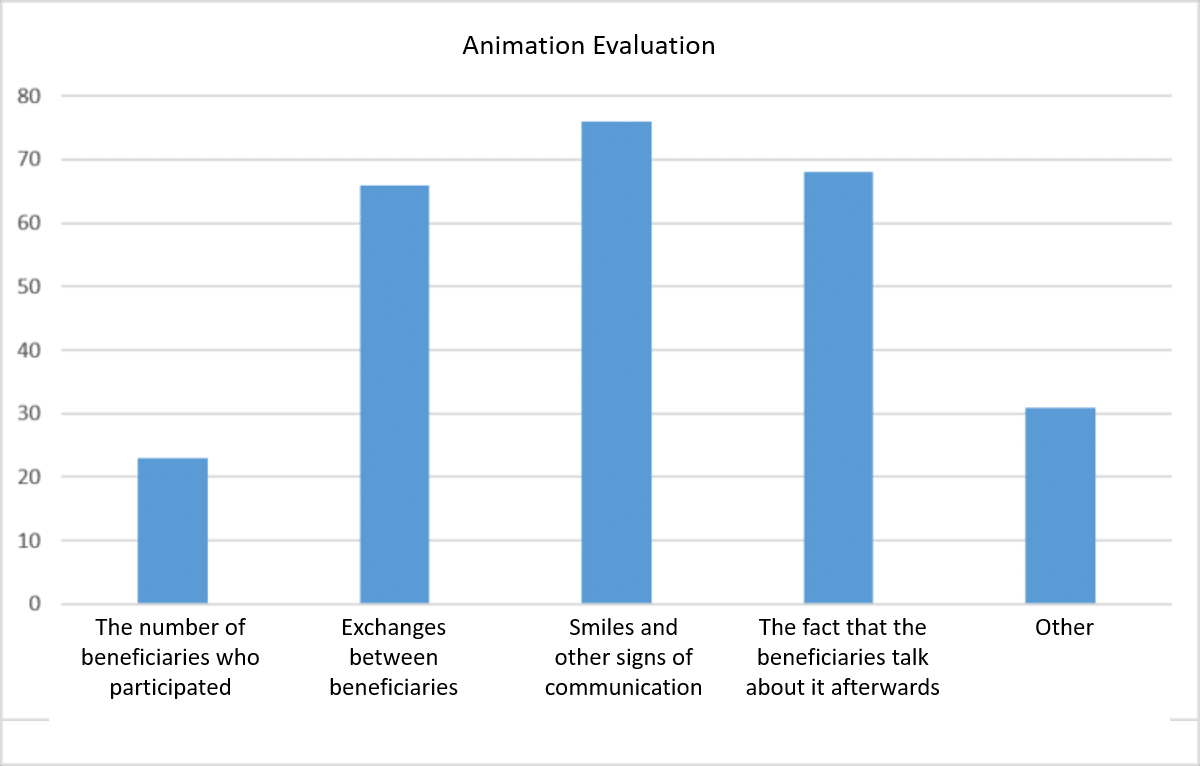
Several other criteria are used to evaluate good facilitation, both in terms of achieving the objectives set, but also in terms of the reactions of users and their entourage:
Before the animation
Users have sometimes heterogeneous profiles, with completely different pathologies, physical, motor or intellectual capacities. The facilitators must take care of each one ‘s specificity, while promoting a group dynamic and encouraging exchanges. Animation must therefore be adapted to the level of the users’ understanding and must not put them in difficulty.
It is best to warn, reassure and verbalize them throughout the activity.
Residents must be active according to their level of competence and be in a fulfilling environment that encourages them to express themselves. A final objective can energize the workshop, for example a performance or an exhibition, even an internal one.
During the animation
Not all residents communicate verbally. Users can be receptive: they smile, laugh, are relaxed, calm and spontaneously go to the supervisor. They show signs of affection, are motivated, and feel good.
After the animation
Health professionals ask youth if they enjoyed the activity and what they retained. Some youth express their satisfaction and feel valued by the activity.
Users await the next session. They become loyal to the activity. They talk about it among themselves.
In the more or less long term, the user progresses in his perception of space, he acquires more autonomy, develops his social skills and his behaviour improves.
The result of an animation is also the relationship that is inscribed in time, leaving a memory imprint shared by all.
The families’ feedback on their child’s progress is also a good indicator.
As a specialized educator, what percentage of group animations compared to individual animations do you do?
Animations are almost never, only collective or individual. They are balanced, with 70% of group activities and 30% of individual activities.
Do you do individualized follow-up of your animations?
At 85%, the animations are accompanied by an individualized follow-up.
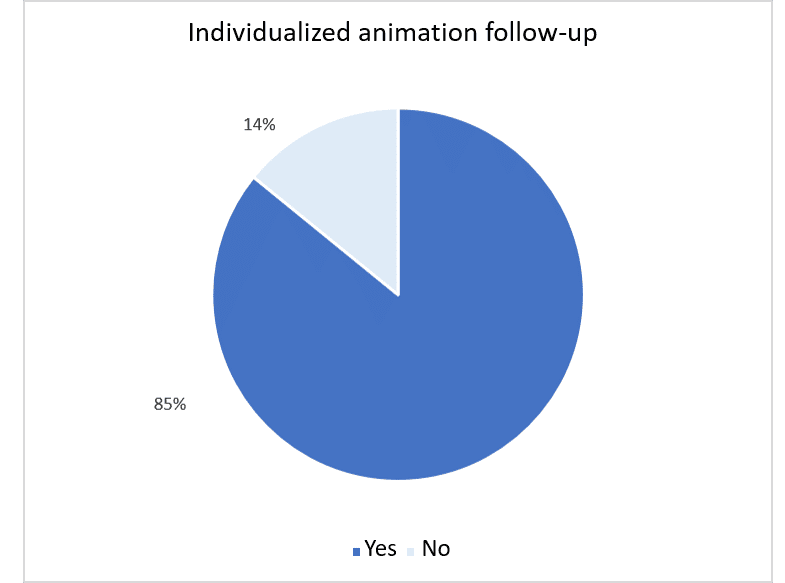
What advice would you give to a beginning facilitator?
Here is a list of advice given by facilitators in institutions specializing in disability. This list is non-exhaustive, given the wealth of information collected, do not hesitate to ask us for more details!
In preparation of the animation
- Find out more about the pathology,
- First, observe the users to identify their preferences and desires,
- Anticipate and prepare by adapting to each participant,
- Define realistic and achievable goals, so as not to put the user in a situation of failure.
During the animation
- Observe and adapt,
- Allow individual time for the people you welcome during your sessions.
Sequencing is an important element in an animation. It allows the participants to follow and take an interest throughout the session. To do this, the speakers create key moments such as: refocusing, speaking before/after the session. It is important to plan break times in line with the target audience. At the end of the session, the speakers take stock and announce the program for the next activity. They can adjust their program according to the different feelings.
After the animation
- Make the written and oral assessment at the end,
- Question yourself about the benefits of facilitation, elicit outside opinions and ask colleagues for help,
- Multiply professional experiences in different fields of disability.
In general
- Listen to the beneficiaries,
- Be patient and positive in the face of the resident’s possible failure, and always be proud of the resident.
- Be friendly, trust your team, users and their families.
It is better to prefer quality individual support by favouring groups with a limited number of users rather than involving a larger number of residents.
In terms of organization
- Think of the collective, then the individual,
- Keep a logbook to help you adjust your projects and draw up a balance sheet.
- Set up new activities and have as many people as possible try them out.
The activity is a support to the relationship, what matters is the goal to which it tends. A good animation corresponds to a collaboration with the family and the different partners.
Specialized institutions in the disability sector in the face of new technologies
Have you tested new technologies?
At 54%, institutions specialized in the disability sector have tested new technologies.
What new technologies have been tested?
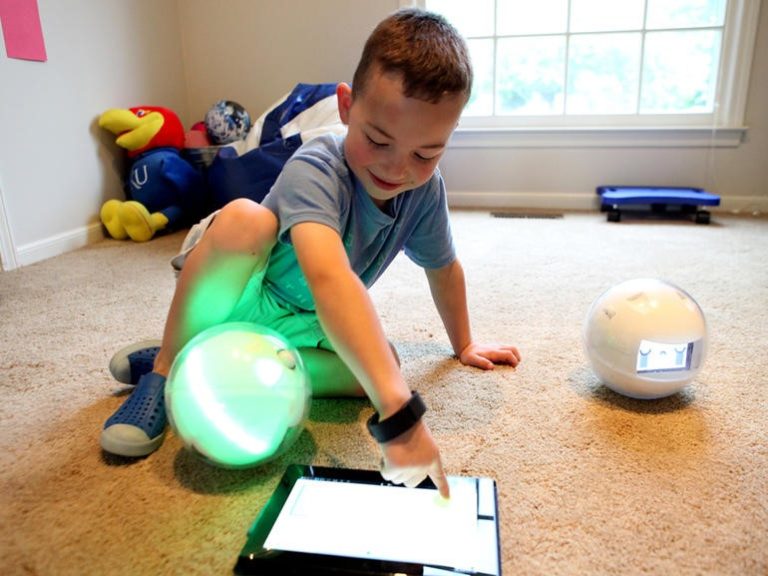
The new technologies being experimented are varied: phones, cameras, video projectors, touch pads and computers but also cardio watches with GPS for hiking.
Some internet functionalities have been developed in particular with the residents: Internet, social networks, web radio but also photo retouching software, cognitive training and fun games.
Residents take care of their administrative procedures and manage their photo and video files. They create interactive boards and make voice dictations.
Very interesting ideas are to be retained from the new technologies tested: the BAO PAO and the LEKA robot for autistic people.

What worked?
Here are the new technologies that have worked and their specificities:
- Educational and/or playful games,
- Coloring on touch-sensitive tablets,
- Movie trailers, cartoons and other videos,
- The music, the reading of messages,
- Research on the internet.
In terms of feeling, too, new technologies have brought new things to residents, and facilitators have noted:
- A surpassing of oneself made possible by technology,
- An aid to articulation thanks to audio recordings,
- An enhancement of self-awareness and the image that the user sends back to others,
- A curiosity of the residents and exchanges between them.
What didn’t work so well?
Here are the negative points of the use of new technologies in institutions specialized in the disability sector:
- Tools that are not sufficiently adapted to the residents’ abilities,
- Difficulties in accepting the digital tool which may seem intrusive,
- No internet access at home,
- A lack of financial means to purchase a computer or tablet,
- Learning paths that are too supervised for experimentation and therefore too confining.
What needs to be improved?
The following are areas for improvement with respect to new technologies currently in use:
- Adaptation of Word, Excel, keyboard and mouse software,
- Expanding the training of facilitators,
- The systematic transcription of daily actions,
- Real-time remote start up and data verification of the cardio watch,
- The cost of certain tools is sometimes an obstacle,
- Wider dissemination of educational and playful tools based on theory and practice.
Why haven’t you tested new technologies?
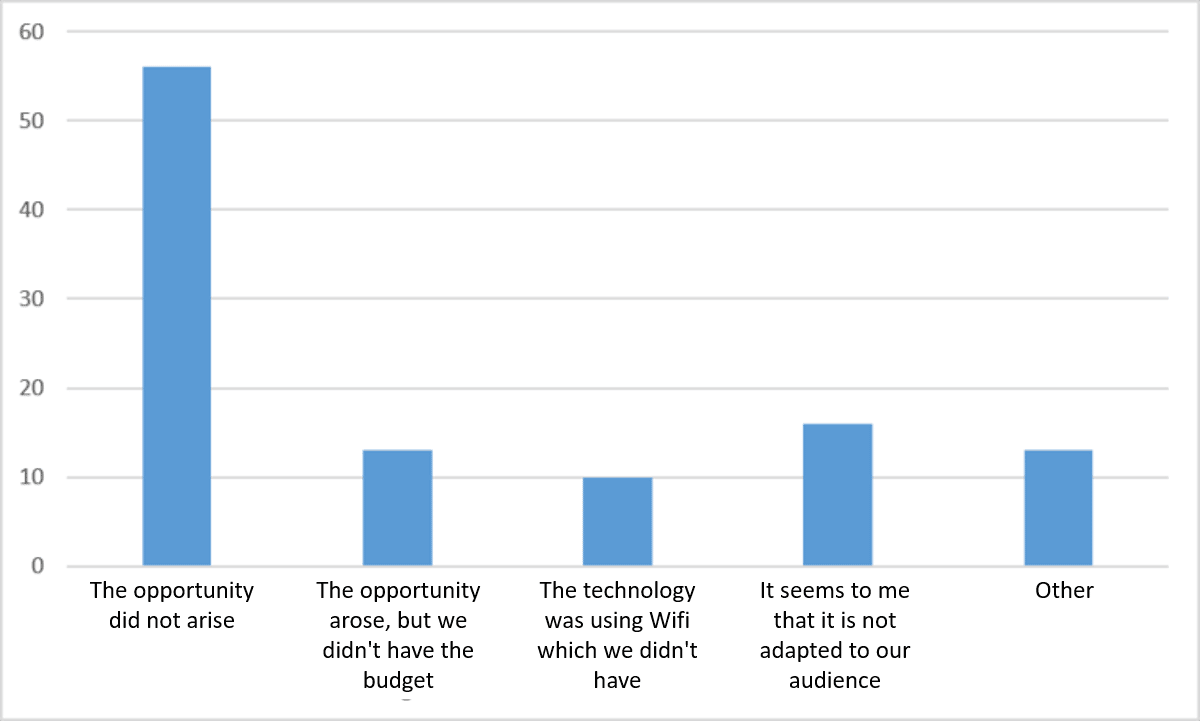
Here are other reasons why new technologies have not been used:
- The cost of adapted software and computers is too high,
- The difficulty of conducting individualized projects for each child,
- Residents’ motor and perceptual difficulties sometimes seem to be too great.
Structure information
Respondent Profile
In 48% of the cases, the respondents to this survey were the special educators in the institutions, but the questionnaire was also often completed by health care aides or psychologists.
How many places does your structure have?
The majority of establishments have a capacity of 30 to 60 places.
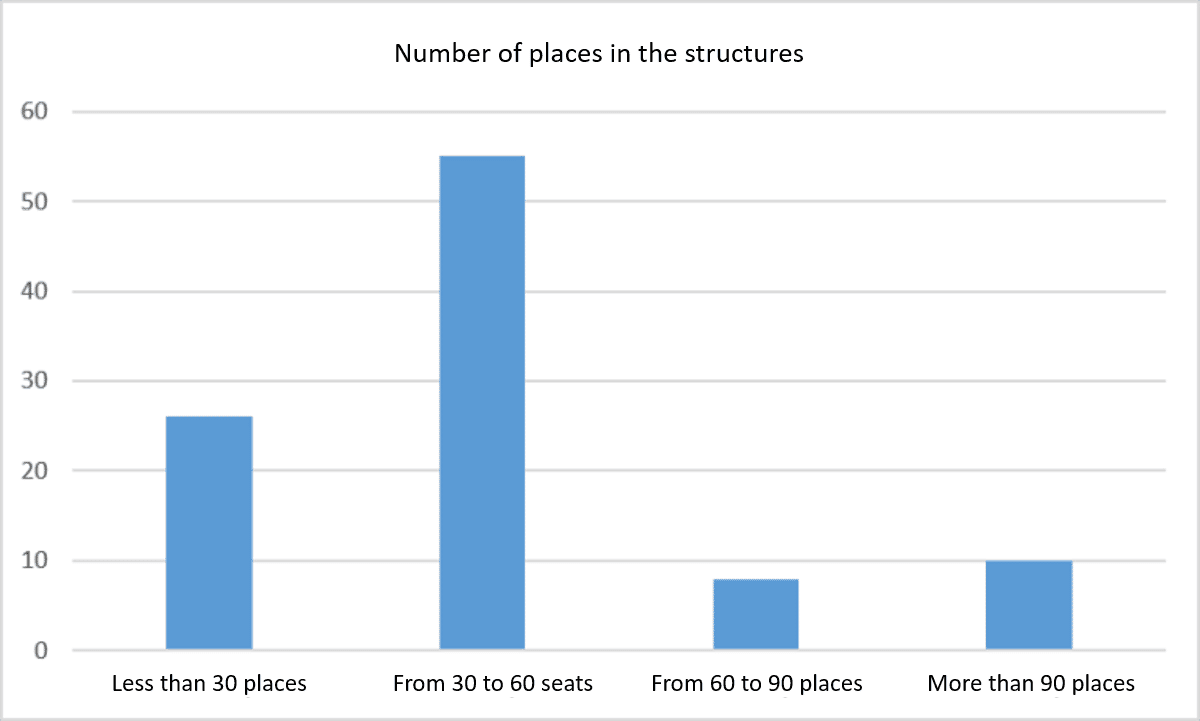
Are you interested in this survey? Would you like to discuss with a professional the possibility of setting up digital activities in your establishment?
Discover innovations adapted for the disabled that may be of interest to you:
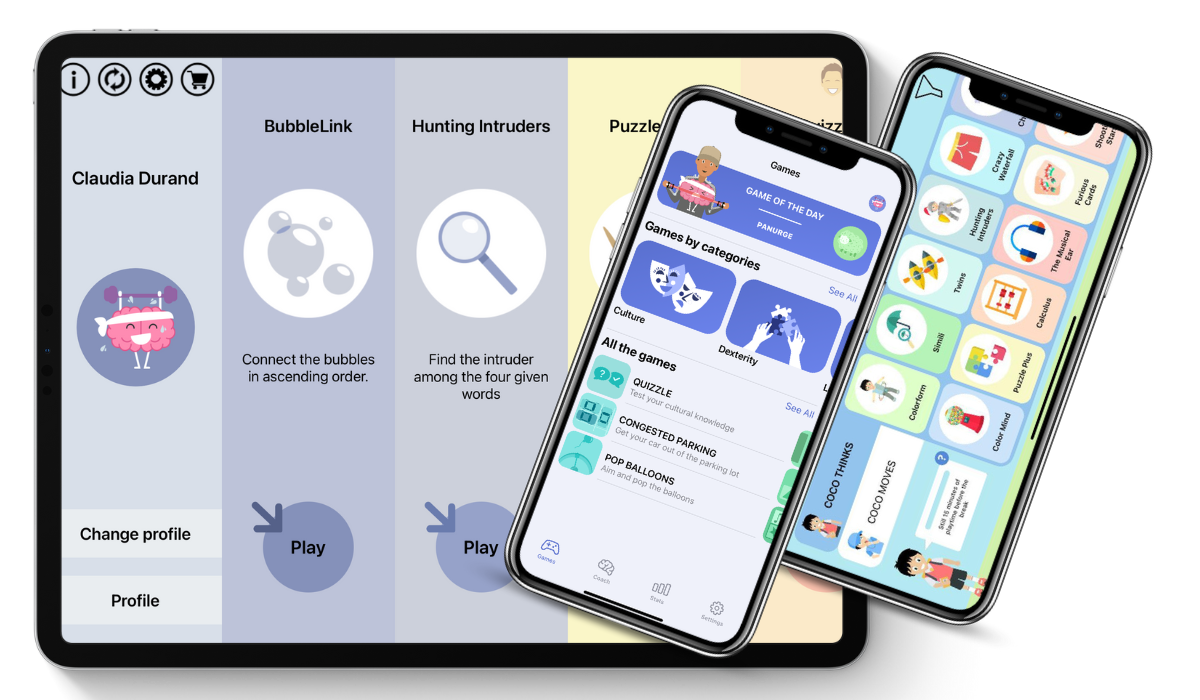
Our memory games are the solution! Currently used in residential care services, , our games are used by occupational therapists, speech therapists, speech therapists, speech therapists, psychomotor therapists, nurses, nursing auxiliaries and life support workers. Our cerebral training program thus allows us to distract children and adults while stimulating them cognitively.



